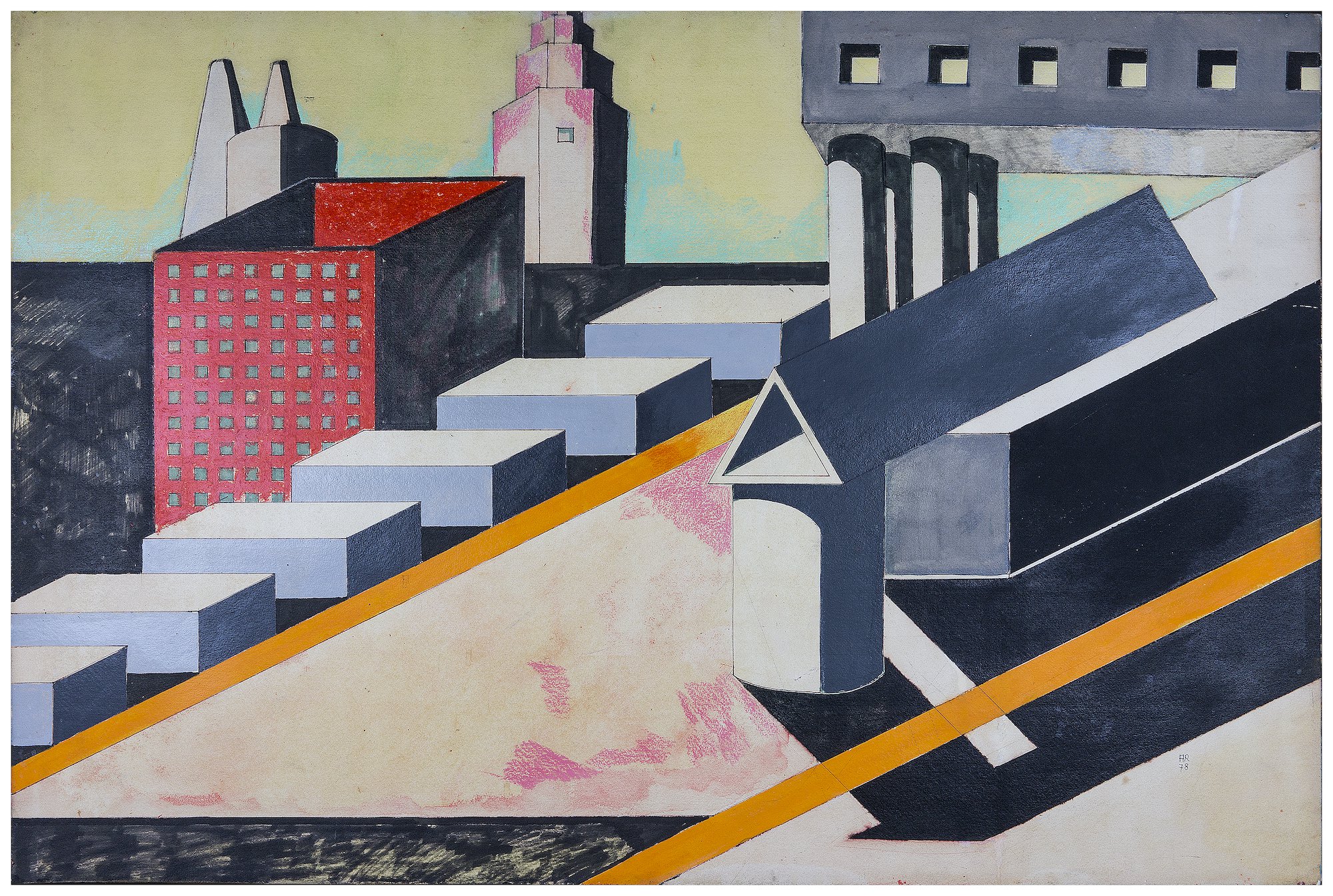Aldo & Adolf

And architecture itself? Architecture is still the central theme of Loos’s thought, and among his essays is a piece on the competition sponsored by the Chicago Tribune, a piece, which, like the one on the Michaelerhaus and ‘Ornament and Crime,’ is essential to the understanding of the meaning of architecture.
This latter piece is to my mind particularly pertinent today, at a time when ‘postmodernism’ is being praised with the same superficiality and the same arguments as modernism was: with everything packaged into a discussion of forms—forms which ‘change as quickly as a lady’s hats.’ For Loos the experience with the Chicago Tribune competition is a decisive one. In this experience he measures himself against the classical world, the great architectural works, and the American city, which made such a deep impression on him. It is certain that Loos is one of the very few architects who understood American architecture (this was also the case later with certain Soviet architects); what particularly impressed him were certainly New York and perhaps St. Louis, and to a lesser extent Chicago. While European modernists were getting excited about the constructions of Wright, dreaming about who knows what sort of exotic democracy, Loos was resolutely exploring the streets of downtown New York, amazed at the dark, immense buildings of Broadway and the perspectives offered by the buildings of Wall Street. The beauty of this nucleus of American business struck him in much the same way that the beauty of aristocratic and capitalist London had once struck Engles. The Austrian master understood that this was the form of the architecture with which one had to come to terms; as in ancient Rome, Venice, or Paris, the architecture of the city was a totality of exchanges, interrelationships, similitudes, and grafts. And from all this a new architecture would be born; the classical orders would be used according to the specification of the theoreticians or altogether overturned; green Corinthian capitals would enclose large window frames made of iron; each fragile ‘collage’ would vanish in the strength of the materials used; the spires at the top of the skyscrapers would always be different. Loos was to write that ‘the architect is a bricklayer who has studied Latin’; I remember that for Ernesto Rogers this was the best definition of the architect that he had ever heard, and I would tend to agree with him. Thus, Loos’s passion for architecture is only manifest when he is confronted by mastery in construction, great Roman architecture, Fischer von Erlach, eighteenth-century building, and the masters who transcended construction itself and remain as fixed points of reference in the history of civilisation. As in the writings of Baudelaire, the influence of invention on life is marked by fixed reference points, points which enable one to grasp fully the changes of life itself, in the same way that the fixity of lighthouses enables ships to navigate. The notion of the bricklayer who has studied Latin calls to mind Palladio, who did not finish his designs so that he could translate classical texts; it calls to mind Leonardo and Petrarch who in their old age studied Greek that they might better understand the ancients.
In his emphasis on monuments and antiquity, Loos is nevertheless perhaps the first to speak of tradition in a modern sense; and he speaks of it as a man of the city, one who knows its places and houses as if they were family photographs, one who loves old things and their ruin, who knows how each place is steeped in personal history and sees with sadness how all of this is destined to perish…
Excerpted from Spoken Into The Void: Collected Essays by Adolf Loos, 1897–1900 (MIT Press, 1987). Text © Eredi Aldo Rossi.

– Alvar Aalto